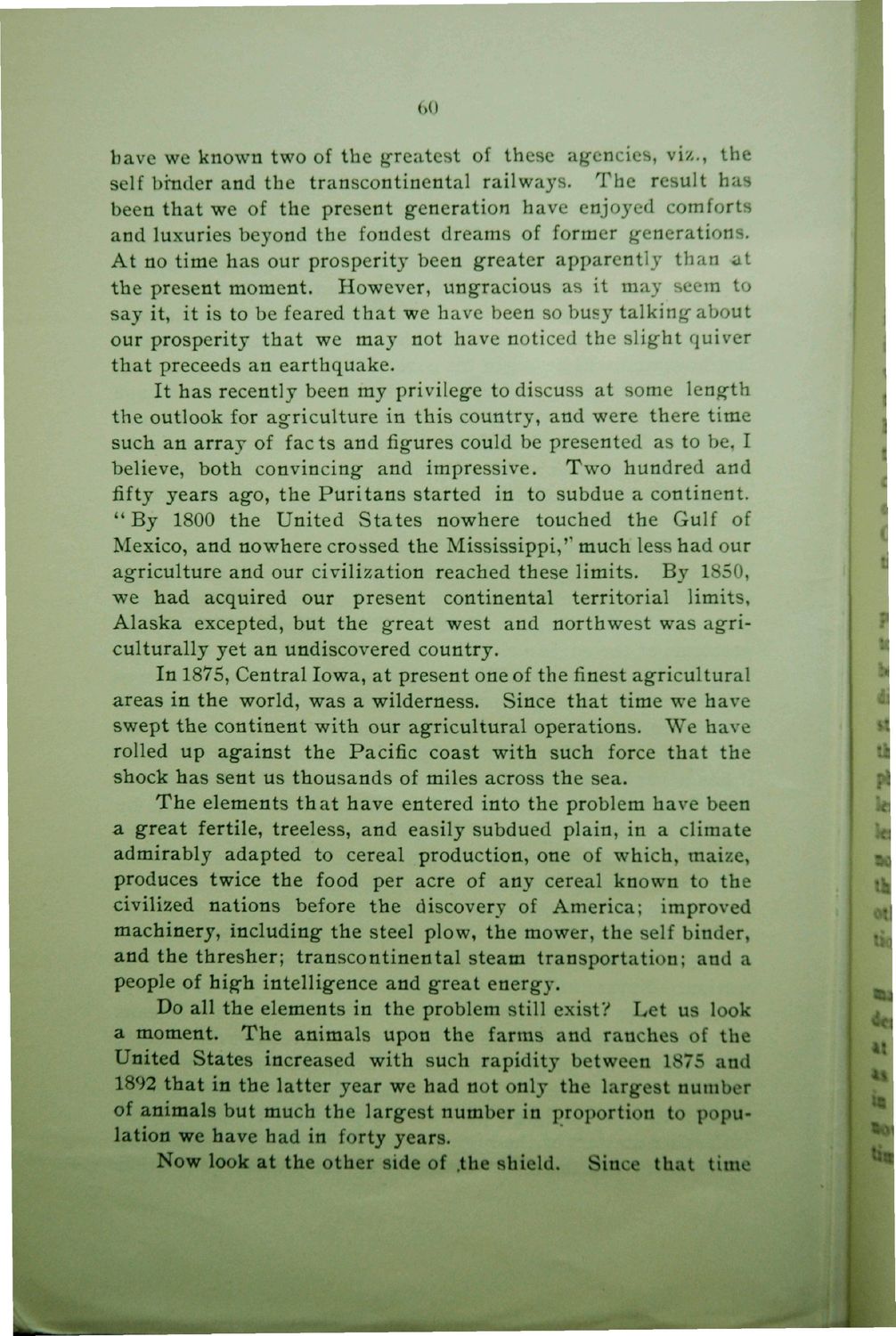| |
| |
Caption: Dedication - Ag Building
This is a reduced-resolution page image for fast online browsing.

EXTRACTED TEXT FROM PAGE:
W) bave we known two of the greatest of these agencies, viz., the self binder and the transcontinental railways* The result has been that we of the present generation have enjoyed comforts and luxuries beyond the fondest dreams of former generations. At no time has our prosperity been greater apparently than a t the present moment. However, ungracious as it may seem to say it, it is to be feared that we have been so busy talking about our prosperity that we may not have noticed the slight quiver that preceeds an earthquake. It has recently been my privilege to discuss at some length the outlook for agriculture in this country, and were there time such an array of f ac ts and figures could be presented as to be, I believe, both convincing and impressive. Two hundred and fifty years ago, the Puritans started in to subdue a continent. "By 1800 the United States nowhere touched the Gulf of Mexico, and nowhere crossed the Mississippi/ 1 much less had our agriculture and our civilization reached these limits. By 1850, we had acquired our present continental territorial limits, Alaska excepted, but the great west and northwest was agriculturally yet an undiscovered country. In 1875, Central Iowa, at present one of the finest agricultural areas in the world, was a wilderness. Since that time we have swept the continent with our agricultural operations. We have rolled up against the Pacific coast with such force that the shock has sent us thousands of miles across the sea. The elements that have entered into the problem have been a great fertile, treeless, and easily subdued plain, in a climate admirably adapted to cereal production, one of which, maize, produces twice the food per acre of any cereal known to the civilized nations before the discovery of America; improved machinery, including the steel plow, the mower, the self binder, and the thresher; transcontinental steam transportation; and a people of high intelligence and great energy. Do all the elements in the problem still exist? Let us look a moment. The animals upon the farms and ranches of the United States increased with such rapidity between 1875 and 1892 that in the latter year we had not only the largest number of animals but much the largest number in proportion to population we have had in forty years. Now look at the other side of #the shield. Since that time
| |